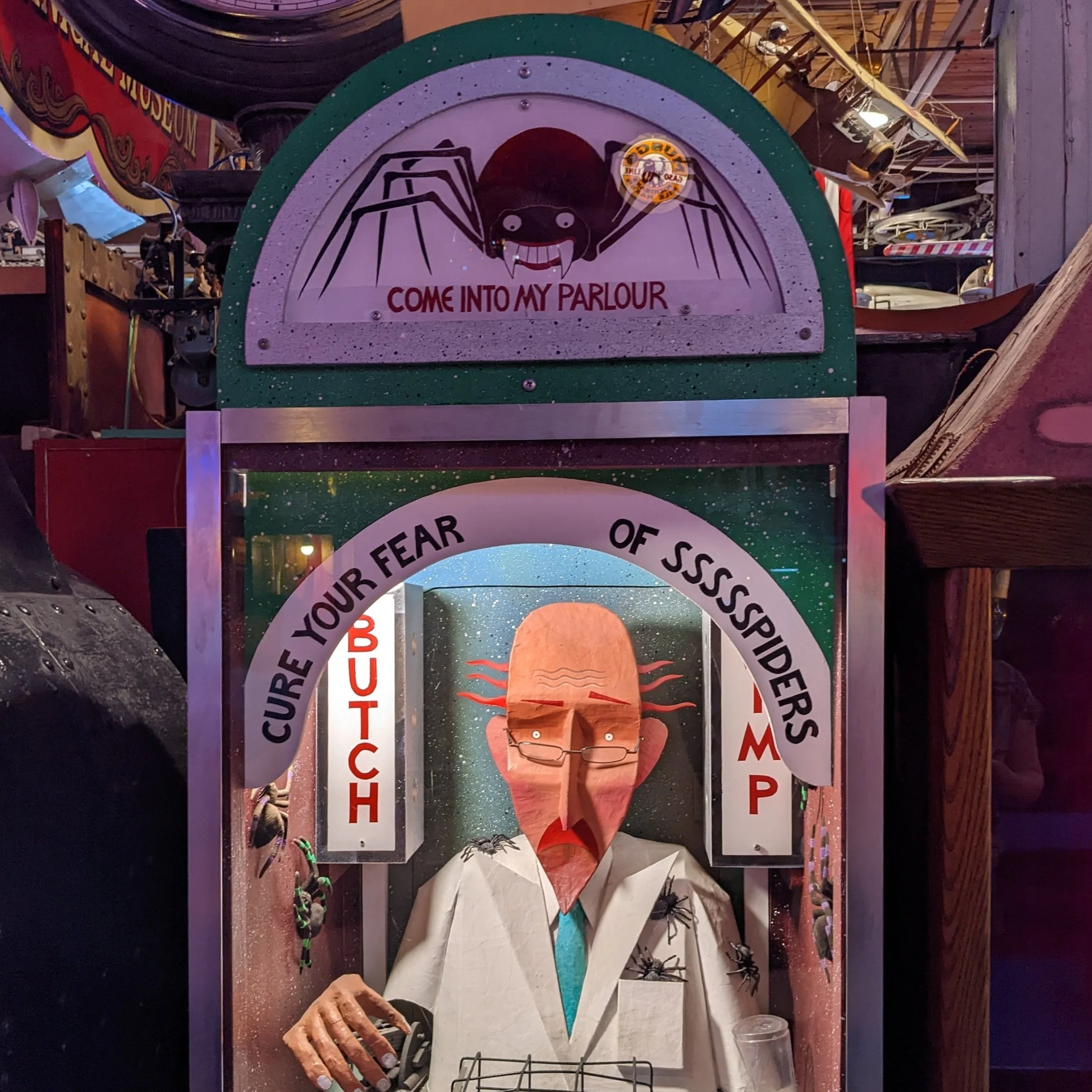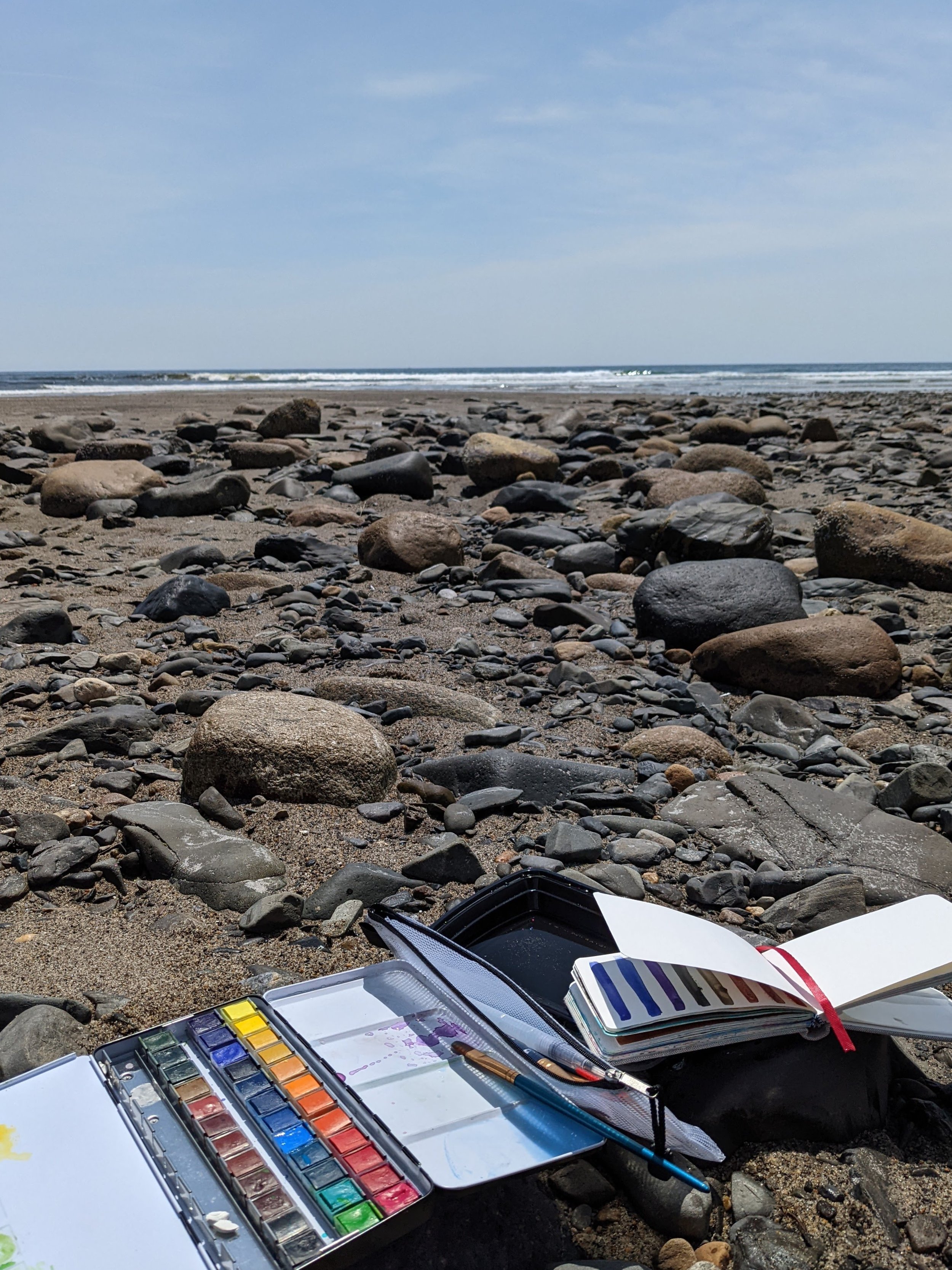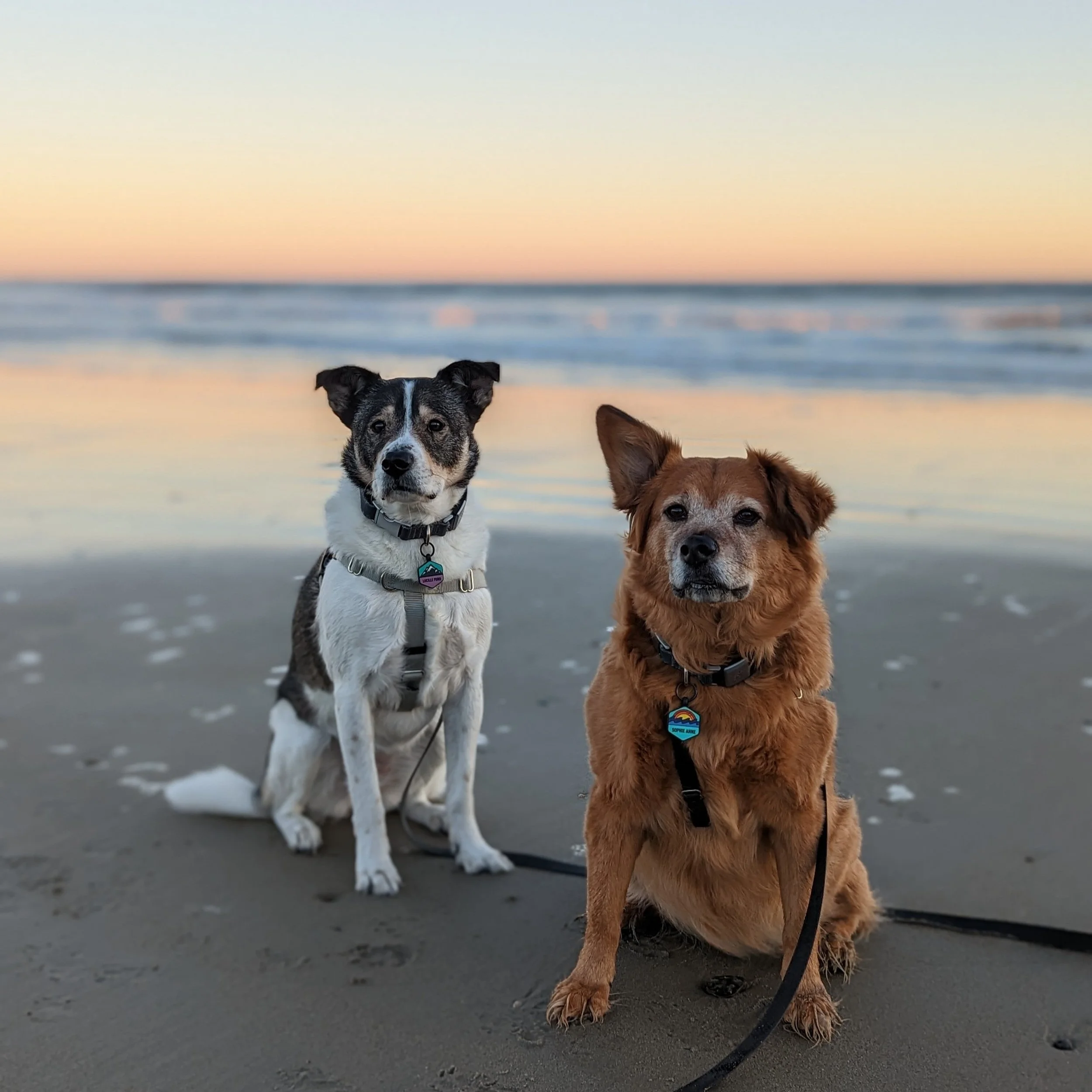Exposure and Response Prevention
Facing your fears can be a daunting idea, but Exposure and Response Prevention (ERP) can help.
Exposure and Response Prevention, or more commonly called ERP or EXRP, is currently the Gold Standard for the treatment of Obsessive Compulsive Disorder (OCD). It is a subtype of the more commonly used Cognitive Behavioral Therapy (CBT). In order to understand how ERP works, we must first understand the basics of OCD.
OCD is comprised of both obsessions and compulsions. Obsessions are defined as unwanted thoughts, images or impulses that repeatedly occur outside a person’s control. Obsessions are often accompanied by intense anxiety and distress. Compulsions are defined as repetitive thoughts, actions, or behaviors that a person uses to reduce or neutralize the anxiety caused by their obsessions.
ERP is composed of both exposure and response prevention. Exposure is when you intentionally confront the thoughts, images, or objects that make you anxious, or trigger your obsessions. Working with a therapist, you would first create a hierarchy of fears or anxiety inducing thoughts, images or objects. Exposures systematically work their way up the hierarchy while increasing distress tolerance so that you can handle the larger, more anxiety inducing scenarios. The response prevention component comes into play as you experience the anxiety and resist the urge to complete your compulsions.
There are three main goals of ERP: Habituation, Disconfirmation, and Mastery.
Habituation is learning that anxiety does not last forever, will go down over time, and with a reduction in anxiety will come the reduction in the intensity of the urges to ritualize.
Disconfirmation is learning that the things OCD says will happen do not happen or are extremely unlikely to happen. And if they do happen, that you will be able to handle it.
Mastery is learning that you can tolerate doubt, uncertainty, and the presence of unwanted thoughts without having to change or suppress them, so that you feel in control, rather than OCD.
There is a lot more to ERP than can be outlined in a blog post, ERP can be scary, so it is important that you have a trustworthy competent therapist by your side. If you have ever experiences intrusive thoughts, obsessions and compulsions, feel free to reach out for a consult on my contact page.
“CURE YOUR FEAR OF SPIDERS”
Curing a fear is a bold claim for an old school arcade game. But the premise is pretty solid: exposure to the things that you fear can in fact help reduce the anxiety around them.
This particular machine was spotted at an old school arcade in Michigan.
Sources:
National Collaborating Centre for Mental Health (UK). Obsessive-Compulsive Disorder: Core Interventions in the Treatment of Obsessive-Compulsive Disorder and Body Dysmorphic Disorder. Leicester (UK): British Psychological Society; 2006. (NICE Clinical Guidelines, No. 31.) 5, PSYCHOLOGICAL INTERVENTIONS. Available from: https://www.ncbi.nlm.nih.gov/books/NBK56465/
American Psychiatric Association, Koran, L. M., Hanna, G. L., Hollander, E., Nestadt, G., & Simpson, H. B. (2007). Practice guideline for the treatment of patients with obsessive-compulsive disorder. Arlington, VA: American Psychiatric Association, 2007. Available online at http//www.psych.org/psych_pract/treatg/pg/ prac_ guide.cfm
What is Art Therapy?
Art Therapy is an integrative mental health and human services profession that enriches the lives of individuals, families, and communities through active art-making, creative process, applied psychological theory, and human experience within a psychotherapeutic relationship.
Art Therapy, as defined by the American Art Therapy Association (AATA):
Organization:
The American Art Therapy Association is a not-for-profit, professional and educational organization dedicated to the growth and development of the art therapy profession. Founded in 1969, The American Art Therapy Association is one of the world’s leading art therapy membership organizations.
(Concise) Definition of Art Therapy:
Art Therapy is an integrative mental health and human services profession that enriches the lives of individuals, families, and communities through active art-making, creative process, applied psychological theory, and human experience within a psychotherapeutic relationship. Art Therapy, facilitated by a professional art therapist, effectively supports personal and relational treatment goals as well as community concerns. Art Therapy is used to improve cognitive and sensory-motor functions, foster self-esteem and self-awareness, cultivate emotional resilience, promote insight, enhance social skills, reduce and resolve conflicts and distress, and advance societal and ecological change.
(Broader) Definition of Art Therapy:
Art Therapy is an integrative mental health and human services profession that enriches the lives of individuals, families, and communities through active art-making, creative process, applied psychological theory, and human experience within a psychotherapeutic relationship. Art Therapy, facilitated by a professional art therapist, effectively supports personal and relational treatment goals as well as community concerns. Art Therapy is used to improve cognitive and sensory-motor functions, foster self-esteem and self-awareness, cultivate emotional resilience, promote insight, enhance social skills, reduce and resolve conflicts and distress, and advance societal and ecological change. Art therapists are master-level clinicians who work with people of all ages across a broad spectrum of practice. Guided by ethical standards and scope of practice, their education and supervised training prepares them for culturally proficient work with diverse populations in a variety of settings. Honoring individuals’ values and beliefs, art therapists work with people who are challenged with medical and mental health problems, as well as individuals seeking emotional, creative, and spiritual growth. Through integrative methods, art therapy engages the mind, body, and spirit in ways that are distinct from verbal articulation alone. Kinesthetic, sensory, perceptual, and symbolic opportunities invite alternative modes of receptive and expressive communication, which can circumvent the limitations of language. Visual and symbolic expression gives voice to experience, and empowers individual, communal, and societal transformation.
(My) Definition of Art Therapy:
In addition to all of the above, I view art therapy as a tool in my tool box. Art therapy is an alternate and more subjective method of communication, and can be helpful when words can’t quite describe something. Art Therapy is not a requirement, and can be an extension of typical talk therapy sessions. It is about the process, the feelings, and the sensory experiences, not about the final product; therefore, it requires no skill.
Get to know Lauren
Let’s discuss self-disclosure. Many therapists disapprove of the concept of self-disclosure, and some theorists agree. My philosophy on self-disclosure is this: if it helps the client, then it is worth disclosing.
First and foremost, let’s discuss self-disclosure. Many therapists disapprove of the concept of self-disclosure, and some theorists agree. My philosophy on self-disclosure is this: if it helps the client, then it is worth disclosing.
If you don’t like a therapist who self-discloses, you should probably stop reading now. If you like getting to know your therapist a bit, feel free to keep reading.
If you are still here, that is great. I am happy to share some fun facts and random things about myself:
Ginger Root Counseling was born from and for anxiety. This means that yes, I, your potential therapist, have struggled with mental health and more specifically anxiety.
I have two dogs, both of whom I love unconditionally. They are pictured above, and are essentially perfect.
If we ever cross paths in real life I will not acknowledge you. This is not intended to be rude, disrespectful or mean. It is for privacy and confidentiality reasons, and so that you can decide if and when you want to disclose your participation in therapy.
I actually went to art school for my undergraduate degree, and was a Graphic Designer for a few years before returning to school to become a counselor.
I have lived in 3 states, all of which begin with the letter M.
If it is not clear, I am a therapist that wholeheartedly believes in the benefits of self-disclosure. I am often happy to answer questions about myself, as long as they are relevant to the therapeutic process.
Why “Ginger Root”?
Ginger has been around for eons, and has been used medicinally for basically just as long.
Zingiber officinale. Gingivere. Ziggiberis. Zinziberi.
Welcome to the wonderful world of Ginger. Your familiarity might range from chomping on a delicious Gingerbread Cookie at the holidays, to partaking in the medicinal benefits via Traditional Chinese Medicine (TCM), to sipping on a can of ginger ale on a cross-country road trip. (That is Vernor’s for my Michigan readers).
As it turns out, ginger has been found in texts for centuries, and although the origin of ginger root is unclear, it is believed to have been used for over 5000 years. Ginger was likely traded from China or India, and has been highly regarded for it’s medicinal properties since before the fall of the Roman Empire. In Ancient Greece ginger was wrapped in bread and used as a post-meal digestive aid. In England it was baked into a cookie and formed into the first Gingerbread cookie. TCM utilizes a warm, spicy tea or a ginger based tonic. You can use ginger in powdered, fresh, candied or dried form, but what we actually want are the rhizomes extracted from the bulbous root of the ginger plant. The oily substance varies in strength based on the maturity of the plant when harvested.
Scientific data varies in it’s findings, some studies agreeing that ginger is an effective antiemetic, while others state that ginger is neither effective nor ineffective at preventing nausea. Here is a video clip from a 2005 Mythbusters episode that convinced me personally to switch from Dramamine (Dimenhydrinate) to ginger pills for motion sickness. Just a heads up, there is quite a bit of vomiting in the video.
But how does all of this relate to mental health and/or counseling?
For that answer, let me quickly review the basis of the mind-gut connection. The idea that our bodies react to and hold emotions has long been present in psychology and mental health, but the idea that our digestive tract is a “second brain” is a far newer concept. But think about it: Have you ever felt butterflies in your stomach? Or experienced that pesky pre-presentation nausea? Or gone through a gut wrenching break-up? Those are all common examples of how closely the brain and the gut work together. The intestines, home to the Enteric Nervous System (ENS) can be effected by all types of psychological or psychosocial factors.
(For more on how our bodies react to trauma, cautiously read The Body Keeps The Score by Bessel van der Kolk).
Resources:
Bode AM, Dong Z. The Amazing and Mighty Ginger. In: Benzie IFF, Wachtel-Galor S, editors. Herbal Medicine: Biomolecular and Clinical Aspects. 2nd edition. Boca Raton (FL): CRC Press/Taylor & Francis; 2011. Chapter 7. Available from: https://www.ncbi.nlm.nih.gov/books/NBK92775/







